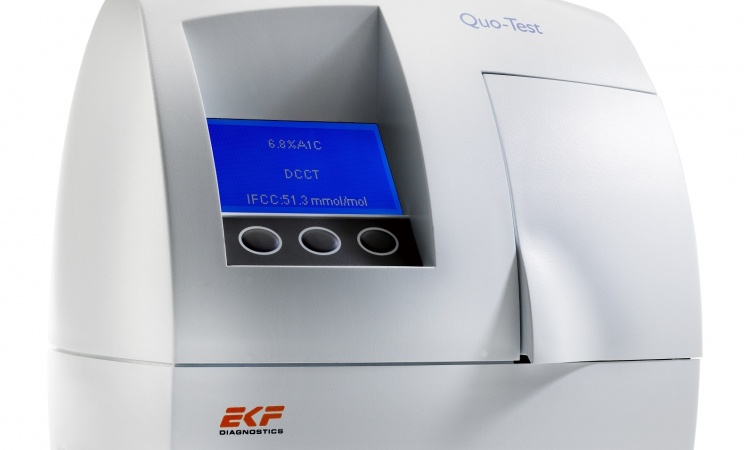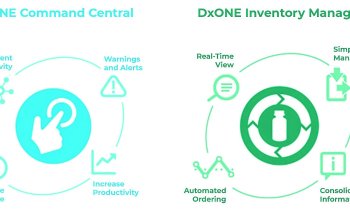Norway leads in POCT quality control
Professor Sverre Sandberg urges central laboratories to improve communication with POCT users
Increasing demand for Point of Care Testing (POCT) devices leads to an increasing number of nurses and physicians working with unfamiliar equipment. Laboratory-quality test results are available in doctor’s surgeries, out-patient clinics and hospital departments. However, how can a high and comparable quality standard for POCT be guaranteed?

In Norway that concern was addressed very early on. In 1992, the country introduced NOKLUS, a quality improvement scheme for laboratory services in primary healthcare. The government and medical association wanted to ensure that laboratory analyses outside hospital are ordered, carried out and interpreted in accordance with the patients’ need for evaluation, treatment, and follow-up.
‘The possibility of errors is generally bigger in the use of POCT instruments than in semi- or totally-automated analysers’, explains Sverre Sandberg, professor in the Department of global public health and primary care at the University of Bergen and a director of NOKLUS. In his eyes, one of the main difficulties in very many countries is that the responsibility for POCT is not clearly defined: ‘Who is responsible for the testing? Is it the laboratory, the general practitioner the clinical ward?’
Another difficulty in these settings is that members of the staff not accustomed with laboratory work are handling the POCT instruments and equipment. ‘Inexperienced hospital or general practitioner’s (GP) nurses and co-workers make mistakes more often, also because they think it isn’t difficult. They think this is a small instrument and so it is easy to do it; they are often too self-confident and don’t know about all the errors that could occur,’ Professor Sandberg explains.
Various studies show the kind of errors that can occur, and it can also be shown that enrolment in an external quality assurance programme can improve quality. In Bergen University Hospital, for example, nurses are regularly trained in glucose measurement and must attend certain courses before they are accepted as operators of the instruments.
In addition, training is not only assured for hospital wards. Along with the provision of an external assurance quality programme for GPs, laboratory consultants are engaged all over the country to offer help to general practitioners surguries, in the form of visits and courses in laboratory work. Advice is also given concerning what point of care tests to have at the GP surgery and how to use and interpret the results.
Two decades ago, when the Norwegian government and Norwegian medical association launched this programme the quality was very low; errors in glucose samples, for example, were high, about 15% of participants showed a poor performance, where now the error quote is about 1%. Participation in NOKLUS isn voluntarily and 99% of GPs in Norway take part in the organisation. Noklus is also expanding to nursing homes, oil platforms, military installations etc.
Thus, today, the country is seen to have introduced an ‘extended’ external assurance quality in a most excellent way because, compared to other countries, it also offers a laboratory consultancy that can help each GP’s offices.
‘In practice there should be an alliance between laboratory medicine and the GP, so that they can help the GPs in some way and handle the difficulties. It is important that the GPs and their employees should have someone to talk to anmd someone to get advice from. The laboratory should have the overall responsibility, at least for training the personnel who are doing the analysis and they also should ensure the quality of the instruments, that high quality instruments are used by the GPs. As a laboratory profession we should be more clear to give concrete advices on, for example, e.g. which instruments to buy ’ Prof. Sandberg advises.
He underlines that laboratories should take greater responsibility for what is going on beyond the hospital and central laboratory. ‘We have to move ourselves outside a little bit more. A lot of measurements are carried out in pharmacies, so we have also to go into this debate and take responsibility for all the testing that’s going on, not only in the central laboratory.
‘POCT is different from central lab testing, so we can’t transfer the routines we do in a central laboratory, for example, internal quality control routines, into POCT because the world outside the central laboratory is different.’
Details: http://www.noklus.no
PROFILE
Sverre Sandberg is director of the Norwegian quality improvement of primary care laboratories (NOKLUS) (www.noklus.no and www.skup.nu), director of the Norwegian Porphyria Centre (NAPOS) (www.napos.no) and a professor at the University of Bergen. He is chair of the Scientific Committee of the European Federation of Clinical Chemistry and Laboratory Medicine (EFLM) and president of the European Organisation for External Quality Assurance Providers in Laboratory Medicine (EQALM).
03.08.2013











